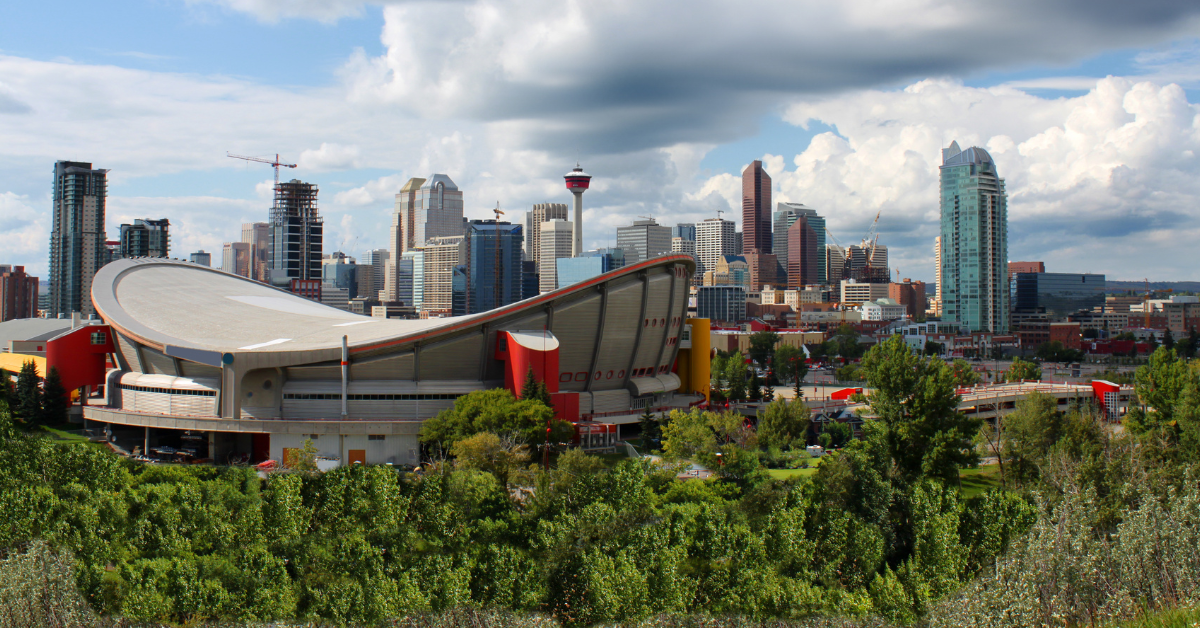Calgary, located in western Canada, is a city where breathtaking nature coexists with modern urban life. In Chinese, it is written as “卡尔加里,” but in Japan, there is no official kanji representation, and it is written in katakana as “カルガリー.” This article explores the city’s origins, culture, sports, and the unique perspective Japanese people have toward Calgary.
Calgary Overview
Calgary is the largest city in Alberta, Canada, with a population of about 1.3 million people. Situated east of the Rocky Mountains, it is often called “the gateway to the Rockies.” The city’s economy grew rapidly thanks to the development of the oil industry, and today, its major sectors include energy, tourism, and education.
Basic Information about Calgary
| Item | Details |
|---|---|
| Country | Canada |
| Province | Alberta |
| Population | Approx. 1.3 million |
| Major Industries | Energy, Tourism, Education |
| Key Features | Harmony between nature and city life, consistently ranked among the most livable cities |
While the downtown area is lined with skyscrapers, vast parks and hiking trails stretch across the suburbs. Calgary’s biggest appeal lies in being a city where one can live close to nature while enjoying urban convenience.
―――――――――――――――――――
The Chinese Kanji Representation “卡尔加里”
“卡尔加里” (Kǎ’ěrjiālǐ) is the Chinese transliteration of Calgary, based purely on pronunciation rather than meaning. In Japanese, there is no official kanji equivalent, and the city is written in katakana, following Japan’s convention for representing foreign place names phonetically.
Comparison of Calgary’s Representations Across Languages
| Language | Representation | Characteristics |
|---|---|---|
| Japanese | カルガリー | Standard katakana form |
| English | Calgary | Official name |
| Chinese | 卡尔加里 | Phonetic transcription |
| Korean | 캘거리 | Based on pronunciation |
All versions prioritize pronunciation over meaning, reflecting a shared global tendency to preserve the sound of the city’s name.
―――――――――――――――――――
Calgary’s History and Development
Calgary began in 1875 when the North-West Mounted Police built a fort in the area. The arrival of the railway accelerated western expansion, and the city became a hub for trade and transportation. After oil was discovered in Alberta in 1947, Calgary quickly grew into the center of Canada’s energy industry.
The 1988 Winter Olympics marked a turning point in the city’s history, leading to major infrastructure improvements and establishing Calgary as a global sports city. Olympic facilities are still actively used today for training and tourism.
Milestones in Calgary’s Development
| Year | Event | Significance |
|---|---|---|
| 1875 | Fort established by the Mounted Police | Beginning of settlement |
| Early 1900s | Railway completed | Boosted trade and logistics |
| 1947 | Oil discovered | Expansion of energy industry |
| 1988 | Hosted Winter Olympics | Gained international recognition |
―――――――――――――――――――
How Japanese People View Calgary
Japanese people often describe Calgary as “clean and safe,” “a city in harmony with nature,” and “an excellent place for education.”
Japanese Perceptions of Calgary
| Aspect | Description |
|---|---|
| Living Environment | Safe city with efficient public transport |
| Education | High-quality institutions such as the University of Calgary |
| Nature | Close to the Rockies and national parks |
| People | Friendly, tolerant, and welcoming to foreigners |
For many Japanese residents and visitors, Calgary’s balance between natural beauty and comfortable living is its most appealing quality.
―――――――――――――――――――
A City Alive with Sports
Calgary is also renowned for its thriving sports culture. Since hosting the 1988 Winter Olympics, it has earned a reputation as a world-class hub for winter sports. Facilities built for the Games remain in use today for international events such as skiing, snowboarding, and bobsleigh.
Professional teams like the Calgary Flames (NHL) and the Calgary Stampeders (CFL) are a source of local pride. Game days bring the entire city together, creating a strong sense of community.
Sports are not just recreation in Calgary—they are a way of life, fostering health, unity, and civic pride among its citizens. From children to seniors, everyone embraces an active lifestyle, making sports a central part of daily life.
―――――――――――――――――――
Calgary’s Climate and Quality of Life
Calgary enjoys over 2,400 hours of sunshine annually, making it Canada’s sunniest major city. Its dry continental climate means low humidity and comfortable summers, though winters can be harsh. The “Chinook” winds occasionally bring sudden warm spells, even in midwinter.
Calgary’s Seasonal Characteristics
| Season | Average Temperature | Features |
|---|---|---|
| Spring | 5–15°C | Dry air and bright sunlight |
| Summer | 15–25°C | Warm days with low humidity |
| Autumn | 0–15°C | Beautiful foliage and mild air |
| Winter | -10 to -2°C | Cold but often sunny |
Public transportation is efficient, with the C-Train system connecting key parts of the city. Spacious housing and light-filled homes make Calgary a family-friendly and livable city for both locals and newcomers.
―――――――――――――――――――
Connections Between Calgary and Japan
Relations between Japan and Calgary are expanding across the economic, educational, and cultural sectors. Japanese companies collaborate with local firms in the energy field, while academic exchanges flourish through the University of Calgary’s Japanese language program.
Each year, the Calgary Japanese Festival celebrates Japanese culture through calligraphy, taiko drumming, and sushi-making workshops. These events strengthen cultural understanding and highlight the city’s openness to international exchange.
―――――――――――――――――――
Conclusion
Calgary is a city of balance—where nature, economy, sports, and culture coexist harmoniously. While it is written as “卡尔加里” in Chinese, the Japanese use the katakana “カルガリー.”
With its pristine environment, world-class sports culture, and steady urban development, Calgary continues to attract people from around the world.
For Japanese people, Calgary represents a city that is both safe and full of opportunities—a place of growth, harmony, and inspiration. It stands as one of Canada’s most dynamic cities, destined to remain a hub for tourism, study, and international exchange for years to come.






